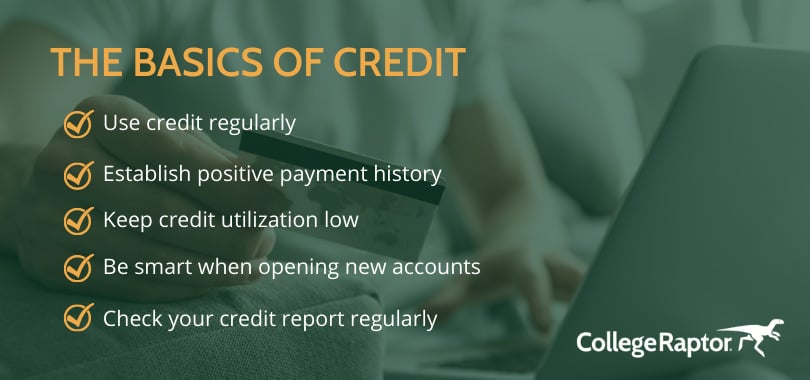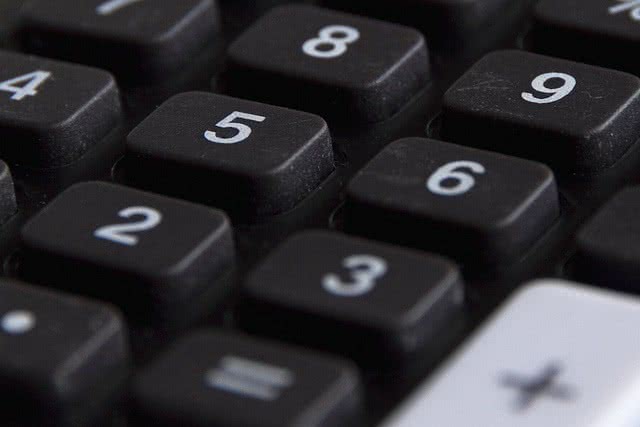Credit is an integral part of building a solid financial future. It determines your ability to get a line of credit in the form of credit cards and loans. It also impacts the cost of borrowing. While good credit can make borrowing a breeze, bad credit can severely restrict your options. Let’s explore more about how it works, what’s good (and bad), and how to build a better score.
How Credit Works
Credit refers to your ability to get a line of credit or to borrow money. When you purchase something with credit, you’re essentially buying things with money you’ve borrowed, with the promise to pay it back by an agreed upon deadline.
A history of consistent on-time payments helps build good credit, which sets a good foundation for your financial health. It determines your ability to access money in the future and also impacts interest rates when you borrow money. Strengthening your credit by making consistent on-time payments could help you get lower interest rates down the road.
Missing payments or defaulting on payments damages your credit history, making it more difficult to borrow money in the future. You’ll likely pay higher interest rates, which significantly increases the cost of borrowing.
Building good credit is a smart financial strategy that will pay off in the long run. It shows potential lenders that you’re a responsible borrower who is committed to paying your dues on time.
Types of Credit
There are two main types of credit – installment and revolving credit.
- Installment Credit. Here, the lender provides a fixed credit amount upfront. You repay the amount borrowed with interest in regular monthly installments over a set period, ranging from months to years. Common examples include student loans, mortgages, auto loans, and personal loans.
- Revolving Credit. Here, a lender grants a credit line up to a set limit, allowing you to borrow as needed. You repay borrowed amounts monthly within a specified date. Once repaid, your credit limit resets for the next cycle. Credit cards are the most common example of revolving credit.
Although these types work differently, both involve making regular repayments within a specified timeline.
What Is a Credit Report & How Does it Relate to Credit Score?
A credit report is essentially a record that contains a complete history of your credit activities. This report is created and maintained by Experian, Equifax, and TransUnion — the three major national credit reporting agencies.
Every time you make a loan repayment, or you pay your credit card bill, your lender reports it to the three credit bureaus. The payment details and payment date are recorded on your report. In addition to the payment details, credit bureaus also receive reports of other credit activities including new credit accounts opened and old credit accounts you’ve closed. Missed payments, accounts sent to collections, bankruptcies, repossessions, and foreclosures also get reported and recorded.
All reported activities are reflected on your credit report and get compiled into what eventually develops into your credit history. Credit bureaus use the details from your credit report to calculate your credit score.
What Is Credit Score?
Credit score is essentially a numerical representation of the data on your credit report. It is a 3-figure number ranging from 300 to 850, with the numbers representing your creditworthiness. This 3-figure score provides potential lenders a snapshot of your credit health. Positive credit activities and longtime responsible credit management adds points and increase your credit score. On the other hand, every negative activity knocks a few points from your credit score, damaging it.
A high score is a quick indication that you manage credit well and are a reliable borrower that pays back any money you borrow on time. A low score generally indicates that you could have missed payments and haven’t managed credit well in the past.
What Is a Good Credit Score?
For loan or credit card purposes, credit scores are ranked from poor to excellent. Here’s a snapshot of credit scoring ranking:
- Poor score – 300 to 579
- Fair score – 580 to 669
- Good score – 670 to 739
- Very good score – 740 to 799
- Exceptional score – 800 to 850
You should check your score regularly to determine its trajectory. If your score shows continued improvement, you know you’re doing the right things. If it keeps dropping, you may be doing something wrong. Take time to check your credit activities to determine what you’re doing to hurt your score and take steps to correct it.
How Credit Score is Calculated
Although every credit bureau uses a slightly different algorithm to calculate credit scores, they all use five factors into the calculation.
Payment history
Payment history has the biggest impact on your credit score. It accounts for as much as 35% of your total score and is the first things lenders check when evaluating your loan application.
Every full, on-time credit card or loan payment improves your score by a few points. Consistent timely payments help strengthen your score steadily and is the fastest way to establish good credit and increase your credit score.
Credit Utilization Ratio
Credit utilization ratio indicates what percentage of available credit you’re using on your credit card/s. It has the second highest impact on your credit score, accounting for 30% of your total score.
Keeping the ratio low, adds points to your score. The lower your credit utilization ratio the higher your score and vice versa. The best way to keep your ratio low and boost your score is by using your credit card sparingly.
Length of credit history
Length of credit history accounts for 15% of your total credit score. It indicates how long you’ve been using credit in general as well as the average age of all your accounts. This includes how long you’ve been using your credit cards as well as how long you’ve been managing debt payments such as student loans, mortgages, vehicle loans and personal loans.
Keeping older credit cards open, even if you’re not using them, adds to the length of your credit history, which adds points to your credit score.
Credit mix
Credit mix takes into consideration the different types of credit accounts you manage and how well you manage all of them. It assesses whether you manage only one type or multiple types of credit accounts and whether you make all of the payments on time or you focus on one account at the cost of the others.
A healthy credit mix would include a combination credit cards, student loans, and mortgage or other type of loans. It accounts for 10% of your credit score.
New credit
This accounts for another 10% of your score. When you apply for a credit card or loan, it triggers a hard credit inquiry on your credit report. Every hard credit inquiry shaves a few points off your score. Applying for multiple credit cards or loans within a short period of time could mean you’re in financial distress, which could damage your total score.
Paying attention to each of the above factors consistently can help improve your score slowly and steadily.
Why Credit History & Score Matter to Lenders
Lenders assess your credit history and score to determine your reliability as a borrower (i.e. will the money they lend you be paid back and in a timely manner).
- A strong credit profile indicates the borrower has a history of making full and on-time payments. Because you show less risk with a strong credit history, approvals are generally easier with lower interest rates.
- On the other hand, if a credit report shows lots of late or missed payments or a think borrowing history, it could indicate higher risk of not receiving payment on borrowed funds. Since the lender is taking more risk, approvals may be harder to get and interest rates higher to mitigate the risk.
5 Tips to Build Good Credit
Establishing a solid credit history is possible but it takes time, patience, and consistently good financial habits.
1. Use It regularly
It’s impossible for lenders to assess how responsible you are with managing your lines of credit without looking at your credit history. And you can’t establish credit history if you never use credit. Getting a credit card is a fairly easy way to start building your credit score. Taking on a student loan or home mortgage and making payments regularly also helps to build on that score.
2. Commit to establishing positive payment history
Whether you’re using a credit card, loans or both, the single most important thing you can do to build credit fast is to make all payments in full before the deadline. If you tend to forget due dates, set up auto pay or set reminders so those payments go out on time.
3. Keep your credit utilization low
While credit cards are excellent tools for building credit, the way you use your cards reveals a lot about your financial circumstances. Racking up high balances on your card or spending up to your credit limit regularly could be a sign that you’re financially overextended. The secret to using your credit card is to limit your spending to about 30% of your credit limit.
4. Be smart when opening new accounts
Applying for multiple credit cards or loans within a short period will trigger multiple hard credit pulls, damaging your score by several points. In general, it’s best to avoid borrowing unless it’s beneficial to you and you know you can pay back what you borrow. You can build credit with just one credit card and one loan.
5. Check your credit report regularly
You’re entitled to one free credit report annually from AnnualCreditReport.com. Get your report and check all entries at least once every year.
Credit reports may sometimes record information inaccurately, which can pull your score down for no fault of yours. If you come across any mistakes, file a dispute with the concerned credit bureau. They will then investigate it and correct the mistake, so your score is reflected correctly.
Working toward building credit may seem like a tedious task but the time and effort you put into building credit is well worth it. When it’s time to borrow money in the future, you’ll benefit significantly from the easy approval and lower interest rates. Visit our Financial Planner Tool to get started building your college savings plan and building that credit up today.





